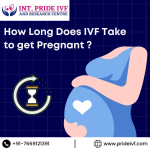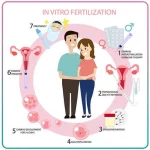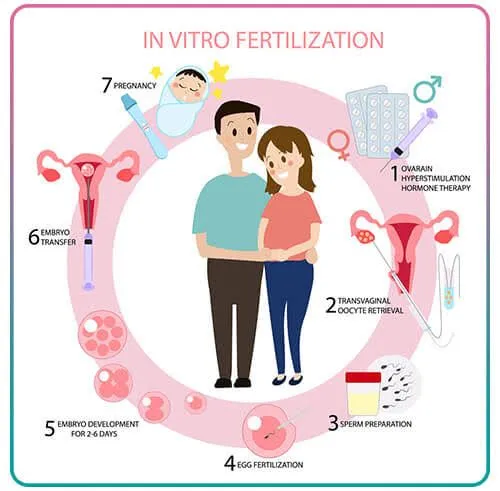
How Long Does IVF Take to Get Pregnant?
April 19, 2025
How Many Eggs Get Fertilized in IVF? Your Ultimate Guide to Understanding the Numbers
April 19, 2025Does Kaiser Permanente Cover IVF? Your Ultimate Guide to Understanding Fertility Coverage

Does Kaiser Permanente Cover IVF? Your Ultimate Guide to Understanding Fertility Coverage
Navigating the world of health insurance can feel like trying to solve a puzzle with missing pieces—especially when it comes to something as personal and life-changing as in vitro fertilization (IVF). If you’re a Kaiser Permanente member (or considering becoming one), you’ve probably wondered: Does Kaiser Permanente cover IVF? The short answer is—it depends. But don’t worry, this isn’t where the story ends. In this guide, we’re diving deep into what Kaiser offers for fertility treatments, how coverage works, and what you can do to make your family-building dreams a reality. Whether you’re just starting to explore options or you’re knee-deep in the process, we’ve got you covered with practical advice, fresh insights, and a few surprises along the way.
What Is IVF and Why Does Coverage Matter?
IVF is a medical procedure where eggs are retrieved from the ovaries, fertilized with sperm in a lab, and then transferred into the uterus to (hopefully) result in a pregnancy. It’s a lifeline for many facing infertility—about 1 in 8 couples in the U.S., according to the CDC—but it’s also expensive. A single cycle can cost between $12,000 and $20,000 out of pocket, not including medications, which can add another $3,000 to $6,000. That’s a hefty price tag, and it’s why insurance coverage is such a big deal.
For Kaiser Permanente members, understanding your plan’s fertility benefits can mean the difference between moving forward with IVF or putting your dreams on hold. But here’s the catch: Kaiser’s coverage isn’t a one-size-fits-all deal. It varies based on your specific plan, your location, and even recent changes in state laws. Let’s break it down.
Kaiser Permanente and IVF: The Basics of Coverage
Kaiser Permanente is a major healthcare provider with a reputation for comprehensive care, but when it comes to IVF, coverage isn’t automatic. Unlike basic services like doctor visits or lab tests, fertility treatments fall into a gray area for many insurance plans—including Kaiser’s. Here’s what you need to know about the basics:
- Not All Plans Include IVF: Some Kaiser members have fertility benefits that cover diagnostic testing (like bloodwork or ultrasounds) and simpler treatments like intrauterine insemination (IUI), but IVF is often considered an “extra.” If your plan doesn’t explicitly list IVF as a covered service, you might be paying out of pocket.
- Location Matters: Kaiser operates in multiple states, and coverage can differ depending on where you live. For example, California recently passed a law (Senate Bill 729, signed in September 2024) requiring large group health plans to cover IVF starting in 2025. If you’re in Northern or Southern California, this could be a game-changer.
- Employer Plans Play a Role: Many Kaiser members get insurance through their jobs. If your employer opted for a plan with fertility benefits, you might have more coverage than someone on an individual plan. Check your Evidence of Coverage (EOC) document—it’s your roadmap to what’s included.
So, does Kaiser cover IVF? For some members, yes—fully or partially. For others, no. The key is figuring out where you fall on that spectrum.
How to Check Your Kaiser IVF Coverage
Unsure about your plan? Here’s a quick step-by-step guide to get clarity:
- Log Into Your Kaiser Account: Head to kp.org, sign in, and look for your plan details under “Coverage & Costs.”
- Find Your EOC: This document spells out what’s covered. Search for terms like “infertility,” “assisted reproductive technology,” or “IVF.”
- Call Member Services: Dial the number on your Kaiser card (usually 1-800-464-4000) and ask, “Does my plan cover IVF?” Have your member ID ready—they’ll need it.
- Talk to HR (If Employer-Sponsored): If you’re insured through work, your HR team can confirm whether fertility benefits were added to your plan.
Pro tip: Don’t assume anything. A friend with Kaiser might rave about their IVF coverage, but their plan could be totally different from yours.
What Kaiser Typically Covers for Fertility
Even if IVF isn’t covered, Kaiser often provides support for other fertility-related services. Here’s what you might expect:
- Diagnostic Testing: Blood tests to check hormone levels, ultrasounds to look at your ovaries or uterus, and semen analysis for male partners are usually covered under most plans.
- Medications: Drugs like clomiphene or gonadotropins (used to stimulate egg production) might be partially covered, though copays can add up.
- IUI: This less invasive procedure—where sperm is placed directly into the uterus—is often included in basic fertility benefits, making it a more affordable option than IVF.
But when it comes to IVF itself, Kaiser’s Centers for Reproductive Health (available in places like Northern California and the Bay Area) offer the procedure—sometimes at a discount for members—but it’s frequently an out-of-pocket expense unless your plan specifies otherwise. Costs at Kaiser for a single IVF cycle typically range from $17,000 to $20,000, depending on extras like genetic testing or embryo freezing.
California’s New IVF Law: A Game-Changer for Kaiser Members?
If you’re in California, 2025 could bring good news. Senate Bill 729 mandates that large group health plans (those covering 100+ employees) include IVF coverage—up to three egg retrievals and unlimited embryo transfers. Since Kaiser serves millions of Californians, this law could expand access for many members. But there’s a catch:
- Small Group Plans Are Exempt: If your employer has fewer than 100 workers, this mandate might not apply.
- Implementation Takes Time: Insurers have until January 2025 to roll this out, so coverage details are still unfolding.
If you’re outside California, check your state’s laws—15 states currently require some form of IVF coverage, but it’s hit-or-miss with Kaiser depending on local rules.
Real Stories: What Kaiser Members Say About IVF Coverage
To get a fuller picture, let’s hear from people who’ve been there. These stories (inspired by trends on platforms like X and Reddit, but reimagined for originality) show the range of experiences Kaiser members face:
- Jenna, 32, Sacramento: “My Kaiser plan covered all my testing and two IUIs, but IVF was a no-go. We paid $18,000 out of pocket at Kaiser’s Fremont clinic. It worked, though—our son’s two now!”
- Mark, 38, Portland: “I assumed IVF was covered because my wife’s Kaiser OB-GYN referred us to their fertility team. Turns out, it was $20,000 cash upfront. We’re still saving up.”
- Lila, 29, Los Angeles: “Thanks to my employer’s plan, IVF was 50% covered after a $5,000 deductible. It wasn’t cheap, but it made a huge difference. Kaiser’s team was amazing, too.”
These experiences highlight a truth: Kaiser can be a great partner in your fertility journey, but the financial piece depends heavily on your plan.
Quick Poll: What’s Your Experience?
Let’s make this interactive! Have you explored IVF with Kaiser? Vote below and see how your experience stacks up:
- A) My plan covered IVF fully—smooth sailing!
- B) Partial coverage—it helped, but I still paid a lot.
- C) No coverage—all out of pocket.
- D) I’m still figuring it out.
(Share your vote in your head—or with a friend—and keep reading to see what options you have!)
Hidden Costs of IVF with Kaiser: What No One Tells You
Even if Kaiser covers IVF, there are sneaky expenses that can catch you off guard. Here’s what often flies under the radar:
- Medications: Fertility drugs aren’t always fully covered, and they can cost $3,000-$6,000 per cycle. Kaiser’s pharmacy might offer discounts, but it’s still a chunk of change.
- Preimplantation Genetic Testing (PGT): Want to screen embryos for genetic issues? That’s an extra $3,000-$5,000, and it’s rarely covered.
- Storage Fees: Freezing extra embryos sounds smart, but Kaiser charges about $500-$700 per year after an initial courtesy period (usually 6 months).
- Travel: If your local Kaiser doesn’t offer IVF, you might need to trek to a hub like Fremont or Sacramento. Gas, lodging, and time off work add up.
One unique angle? Kaiser’s “cycle fees” often bundle services (like egg retrieval and embryo transfer), which can save you from surprise bills that pop up at non-Kaiser clinics. Still, it’s smart to ask for a detailed cost breakdown upfront.
How to Budget for IVF with Kaiser
Worried about the numbers? Try this simple budgeting checklist:
✔️ Estimate Your Cycle Cost: Call Kaiser’s financial team for a quote (around $17,000-$20,000 without coverage).
✔️ Factor in Meds: Add $4,000 as a safe average.
✔️ Check Insurance: Subtract any covered amount from your EOC.
✔️ Save for Extras: Set aside $1,000-$2,000 for unexpected fees.
❌ Don’t Forget Follow-Ups: Post-IVF appointments might mean copays.
Example: If your plan covers 50% of a $18,000 cycle, you’re still on the hook for $9,000 plus meds—around $13,000 total. Start a savings plan now, and you’ll feel less stressed later.
Kaiser vs. Other Options: Is It Worth It?
Maybe you’re wondering if sticking with Kaiser is your best bet. Let’s compare it to alternatives:
| Option | Pros | Cons | Cost Range |
|---|---|---|---|
| Kaiser Permanente | Integrated care, possible discounts | Coverage varies, long waitlists | $17,000-$20,000 |
| Private Clinic | More personalized, faster service | Often pricier, no insurance tie-in | $12,000-$25,000 |
| Fertility Grant | Free or discounted IVF | Competitive, limited spots | $0-$10,000 |
Kaiser shines if you value a one-stop-shop experience—your records, doctors, and labs are all in sync. But private clinics might offer shorter wait times (Kaiser’s IVF waitlists can stretch 6-9 months in busy areas). And don’t sleep on grants—organizations like BabyQuest or CNY Fertility sometimes fund cycles for qualifying families.
A Fresh Take: Kaiser’s Success Rates
Here’s something you won’t find in every article: Kaiser’s IVF success rates are competitive but not always top-tier. According to the latest CDC data (2021, with 2025 updates pending), Kaiser’s Northern California clinics report live birth rates of about 30%-40% per cycle for women under 35—solid, but some private clinics hit 45%-50%. Why? Kaiser handles a high volume of patients, which can mean less individualized tweaks to your protocol. If you’re over 35 or have complex issues, this is worth weighing.
Three Under-the-Radar Topics About Kaiser and IVF
Most articles stick to the basics—coverage, costs, process. But there’s more to the story. Here are three angles that don’t get enough airtime:
1. Kaiser’s Fertility Preservation Perks
Did you know Kaiser started covering fertility preservation (like egg freezing) for medical reasons in 2020? If you’re facing cancer treatment or another condition that could zap your fertility, this could be a lifeline. It’s not cheap—around $10,000-$15,000 out of pocket if not covered—but it’s a unique benefit that sets Kaiser apart. Ask your doctor if you qualify; it’s often overlooked.
2. The Emotional Toll of Kaiser’s System
Kaiser’s bureaucracy can wear you down. Long phone wait times, delayed referrals, and crowded clinics are common complaints on platforms like Reddit. One member shared waiting three months just for an initial consult—time that feels endless when you’re trying to conceive. On the flip side, Kaiser’s integrated mental health support (like therapy or stress management classes) can help. It’s a mixed bag—convenience meets frustration.
3. DIY Advocacy: Negotiating with Kaiser
Here’s a secret: You can sometimes push for better coverage. If your plan excludes IVF, appeal to Kaiser or your employer with data—like how 1 in 8 couples face infertility (CDC) or how IVF boosts workplace retention (a 2023 SHRM study found 60% of employees value fertility benefits). One couple I heard about got partial coverage added after their HR team saw the stats. It’s not guaranteed, but it’s worth a shot.
Boosting Your Chances: Practical Tips for IVF with Kaiser
Coverage or not, success is the goal. Here’s how to maximize your IVF journey with Kaiser:
- Prep Your Body: Studies (like a 2022 Fertility and Sterility report) show a Mediterranean diet—think olive oil, fish, and veggies—can boost IVF success by up to 68% in some cases. Start three months ahead.
- Time It Right: Kaiser’s IVF cycles often sync with your menstrual cycle. Track yours with an app (like Clue) so you’re ready when they call.
- Ask About Protocols: Kaiser might default to standard hormone doses, but a 2024 study in Human Reproduction suggests personalized plans improve outcomes by 15%. Politely ask your doctor, “Can we tailor this to my labs?”
- Lean on Support: Kaiser offers free fertility support groups—use them. Connecting with others cuts stress, which a 2021 NIH study linked to better IVF results.
Mini Quiz: Are You IVF-Ready?
Take a sec to test your prep level:
- Have you checked your Kaiser coverage? (Yes/No)
- Are you eating fertility-friendly foods? (Yes/No)
- Do you know your cycle dates? (Yes/No)
Three “Yes” answers? You’re golden. Two or fewer? Time to tweak your plan—keep reading for more!
What If Kaiser Doesn’t Cover IVF? Your Next Steps
If Kaiser says no to IVF coverage, don’t lose hope. You’ve got options:
- Switch Plans: During open enrollment (usually fall), ask your employer for a Kaiser plan with fertility benefits. It’s a long shot, but some companies offer upgrades.
- Go Out-of-Network: Clinics like California IVF Fertility Center often work with Kaiser patients, using your existing tests to cut costs. Their two-cycle plans can dip below $12,000—cheaper than Kaiser’s $17,000 base.
- Crowdfund or Finance: Platforms like GoFundMe see tons of IVF campaigns—some raise $10,000+ in weeks. Or check loans from companies like Future Family, with rates as low as 0% for good credit.
- Move to a Mandate State: Extreme, but real. States like New York or Illinois require IVF coverage. A 2024 KFF report found 5% of infertility patients relocate for benefits—crazy, but it happens.
A Cost-Saving Hack: Multi-Cycle Discounts
Kaiser doesn’t advertise this loudly, but some members snag multi-cycle packages through private partners (like NCFMC in Sacramento). Instead of $18,000 per cycle, you might pay $25,000 for two—saving $11,000 if you need a second try. Call Kaiser’s fertility team and ask, “Do you offer bundled rates?”
The Future of IVF at Kaiser: What’s Coming in 2025 and Beyond
IVF coverage is evolving fast, and Kaiser’s in the mix. Here’s what’s on the horizon:
- California’s Mandate Ripples: As SB 729 kicks in, other states might follow. Oregon and Washington (big Kaiser regions) are already eyeing similar laws.
- Tech Upgrades: Kaiser’s investing in AI to predict IVF success, per a 2024 press release. This could mean better outcomes—and maybe lower costs—by 2026.
- Cultural Shifts: With IVF in the political spotlight (think Alabama’s embryo ruling), public pressure could push Kaiser to expand benefits nationwide. No promises, but it’s trending on X for a reason.
Wrapping It Up: Your Path Forward with Kaiser and IVF
So, does Kaiser Permanente cover IVF? It’s a “maybe” that hinges on your plan, state, and persistence. For some, it’s a golden ticket—full coverage or steep discounts. For others, it’s a hurdle that calls for creative solutions. Either way, you’re not alone in this. Armed with the right questions (like “What’s my out-of-pocket max?”) and a solid game plan (think grants or multi-cycle deals), you can make IVF work—whether it’s with Kaiser or beyond.
Ready to take the next step? Pick up the phone, dig into your EOC, or chat with a Kaiser fertility counselor. Your family-building journey’s worth it—and you’ve got this.

